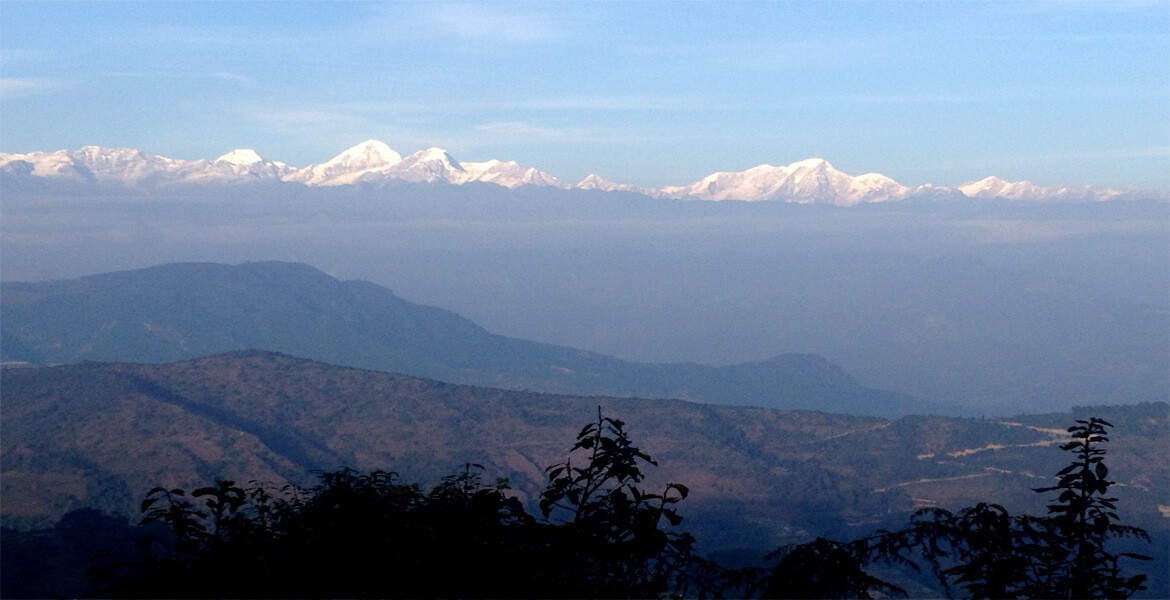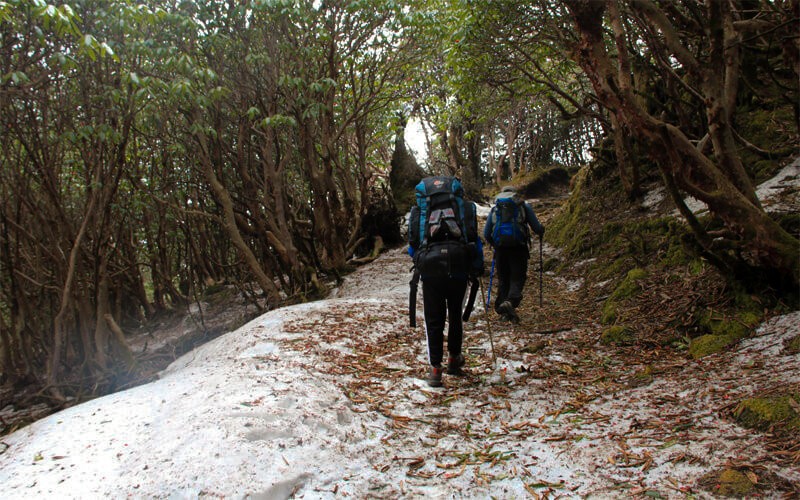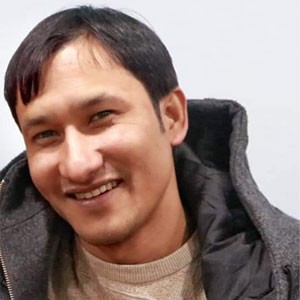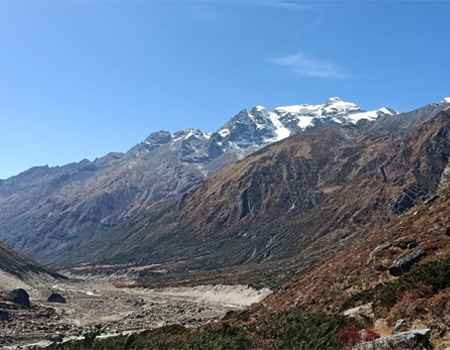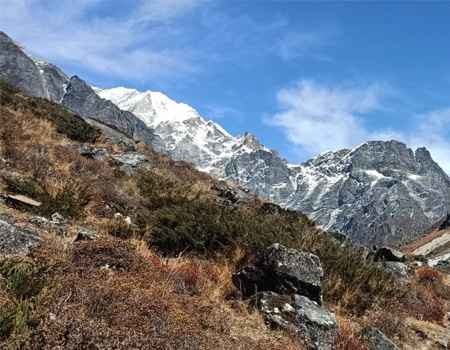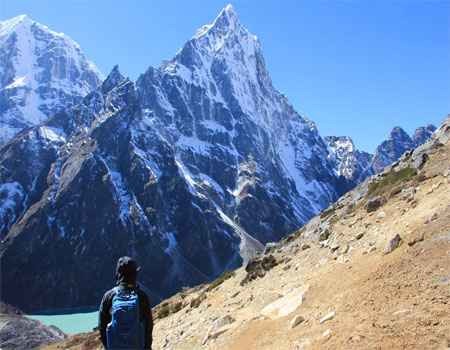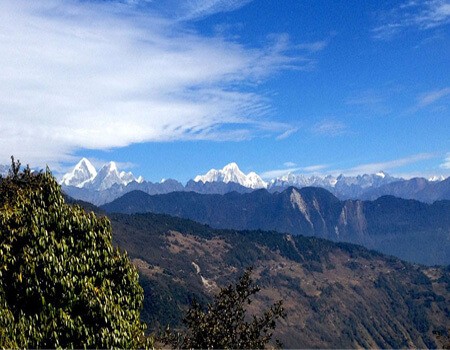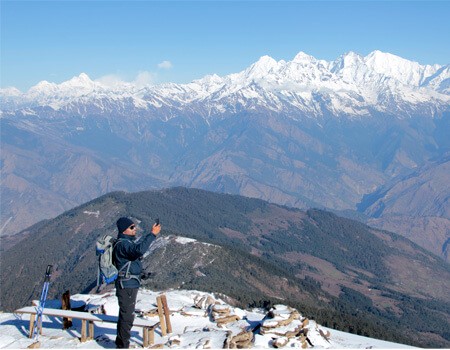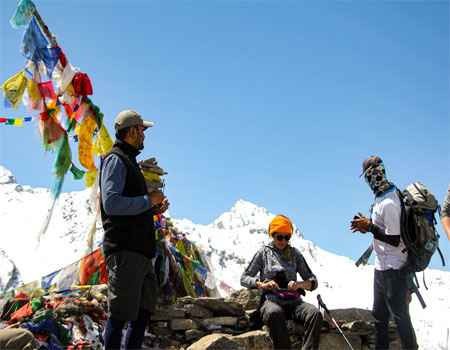The routes in this region, such as the Langtang Valley Trek and the Gosaikunda Lake Trek, are still not as crowded as other trekking routes. Some attractions on the way include waterfalls, forests with various species of flora and fauna, bamboo trees, and terrace farming.
You will also get a spectacular view of the Different mountain ranges, such as Lantang and Ganesh Himal. Along the way, you will visit stupas, monasteries, Hindu temples, mani walls, and more.
This trek has numerous starting points, including Nagarkot, Kakani, and Sankhu. However, the most common is Sundarijal, which is far from Kathmandu.
You will begin your journey from Sundarijal and reach Thadepati, the highest point of this trek. Then, head towards Timbu and drive back to Kathmandu. On this trek, you will walk at a lower altitude.
Related trips:
Highlights of 5 Days Trek to Heambu
- No chances of Altitude sickness
- View mountains such as Ganesh Himal, Langtang Range, and many more
- Visit Monasteries, stupas
- Buddhist culture and tradition
- Lifestyle in the Himalayan
- Sunrise
- Enter Shivapuri National Park
Best time for the trek
Different seasons have their benefits and disadvantages. It’s up to you to decide which time is favorable for you. Usually, many trekkers consider autumn and spring the best times to trek in Helambu.
However, some trekkers prefer Winter and Monsoon seasons as they are less crowded. The winter and Monsoon seasons are thrilling, so you should be prepared while trekking at these times of the year.
Autumn ( September - November)
Autumn falls between September and November. The monsoon rain has just washed away the pollution covering the beauty of nature, and many tourists find the weather conditions favorable.
The temperature is just right for a trek. It is warm and sunny, between 18 and 22 degrees, and you can see the mountain ranges clearly. However, the nights can be cold, as the temperature drops to 10 degrees.
During these months, one of the famous festivals, Dashain and Tihar, also falls. So you get to experience it as well.
However, as this is the peak season for trekking, finding suitable hotels can be challenging. Also, the routes are crowded, and you can find yourself, as a companion, all along the way.
Spring ( March-May)
Spring occurs between March and May. It is when nature comes back to life, bringing the lost greenery of the hills.
It brings new chapters of life with it. Walking in the lush forests, you can see the flowers blooming, birds chirping, etc. If you are lucky, you might also get to see wild animals.
The weather is excellent, with clear skies during the day and starry skies at night. The temperature ranges between 15- 20 degrees during the day and drops up to 5 degrees during the night.
Winter ( December - February)
Winter falls between December and February. These are the coldest months of the year, and the houses are covered in snow blankets.
The warm temperature makes walking possible during the day, but it can drop to -6 degrees at night. Snowfall is also possible, which can be an obstacle on the routes.
However, the Mountain peaks covered in snow are a mesmerizing sight worth all the trouble.
Monsoon ( June - August)
The monsoon occurs between June and August. Trekking at this time of year is quite thrilling compared to other seasons. However, the routes can be slippery and muddy, making the walk challenging.
But the rain-washed environment gives you a fresh feel. During this season, many species of flora and fauna are also found.
During these months, the temperature ranges between 10 and 15 degrees. It can get chilly during heavy rainfall.
Similar articles you may like:
Short Helambu Trek Detail Itinerary
Written below is a detailed description of the Helambu trek for five days:
Day 1: Drive from Kathmandu to Sundarijal, then trek to Chisapani
On your first day, you will drive to Sundarijal and trek to Chisapani. The distance between Kathmandu and Sundarijal is about 15 km, and the drive will take 1-2 hours.
Sundarijal is located on the outskirts of Kathmandu. As you drive through the busy roads, you leave the city, entering unpaved roads. You can see small settlements of villages and large fields from your window.
As you continue driving through these paths, you will reach Sundarijal at an elevation of 1463 m.
From here onwards, your journey begins. You head towards Chisapani. The distance between Chisapani and Sundarijal is about 6.3 km. You will be walking for 4-5 hours to get there.
You start your trek by climbing the trails and entering the Shivapuri National Park. Along the paths, you will see waterfalls and small streams.
As you keep walking upwards, you will reach the first settlement of this trek, Mulkharka. The Tamang community inhabits this village.
From this village, you walk through forests of oaks and rhododendron till you reach Chisapani.
Chisapani is at an elevation of 2300 m. The weather can be chilly, but the view of the mountain range is magnificent.
You stay in one of the lodges.
Day 2: Trek from Chisapani to Kutumsang
You will wake up early on your second day to view the sunrise. One of the attractions of Chisapani is the view of sunrise and sunset.
After spending some time taking snaps in the hills, you head down until you reach Pati Bhanjang, then Gul Bhanjang. From here, you start ascending till you get an elevation of 2620 m. Then you drop down the trails till you arrive at Kutumsang.
Kutumsang is at an elevation of 2446 m. You will have walked 5-6 hours today.
So after a long day, you will stay the night in one of the lodges.
Day 3: Trek from Kutumsang to Tharepati
On your third day, you will trek from Kutumsang to Tharepati. The distance between Kutumsang and Tharepati is about 5-6 hours.
Today you will start your trek by heading up toward the north till you reach Danda Ridge. The splendid view of Mount Langtang, Ganesh Himal, etc., astounds you.
From there, you ascend the steep trails through the lush green forest. The forest is filled with colorful shades of rhododendron, oak trees, bamboo trees, etc.
Then, you walk downhill until you arrive at Magen Goth. This place offers a few lodges and sheds for keeping domestic animals. Then, you start ascending through the enchanting forest, viewing the different species of flora and fauna.
At the end of this trail, you reach Tharepati, the highest point of your trek, at an elevation of 3650 m. You can admire the magnificent views of mountain peaks such as Dorje Lakpa, Gaurishankar, Jugal, etc.
You will be staying overnight in one of the lodges.
Day 4: Trek from Tharepati to Tarkeghyang
On your fourth day, you will descend to Tarkeghyan. The distance from Tharepati to Tarkeghyang is about 4-5 hours.
Today, you will begin your trek by walking steeply downhill until you reach the Melamchi Khola. On your way there, you will pass Melamchi Gaon, a beautiful village.
Then you will cross a wooden bridge above the Melamchi Khola and climb these trails. The trails are steep to Tarkeghyang. On this day, you will have passed many small settlements of people.
Tarkeghyang, also known as Helambu, is at 2560 m. The village is home to the Hyolmo community, which has lived here for centuries. You can visit the monasteries and stupas and see the prayer flags, mani walls, etc.
You will be spending your night here in one of the tea houses.
Day 5: Trek from Tarkeghyang to Timbu, then drive back to Kathmandu
The fifth day is the last day of your trek; you will walk downhill the trails to Timbu and drive back from there. The walking distance between TarkeGhyang and Timbu is about 4-5 hours.
You will walk through forests of magnolia, rhododendron, and pine trees, viewing the mesmerizing landscapes below. Then, at an elevation of 1580 m, you will reach Timbu.
Viewing the beautiful hills and mountains, you drive back to Kathmandu from here. It is about a 4-5 hour drive from Timbu.
I hope this short trek was enjoyable for you.
Acclimatization
Acclimatization is unnecessary for this easy trek, which can be done at lower altitudes. It is done when you trek at higher altitudes to help your body adjust to the climatic conditions of that place. Acclimatization is done mainly to prevent altitude sickness.
Altitude sickness is common for trekkers traveling at higher elevations. It can be dangerous if not treated at the right time. So, while climbing, remember to keep your body hydrated and take breaks.
However, you should not worry about altitude sickness during the trek. The highest point on this trek is 3650 m. However, some people can suffer from it, so if you experience symptoms such as headache, nausea, or shortness of breath, inform your guide immediately.
Physical Condition and Experience
Helambu Trek, five days, is graded as one of the easy treks. There are low risks of Altitude sickness, making the trek uncomplicated. However, the journey up in the hills can’t be predicted. Anything can happen at any moment, so it is better if you have created travel insurance.
Beginners usually make these treks to stay at higher altitudes. These routes might be more accessible for the professional, but noobs consider this trek moderate.
You can prepare yourself in advance by doing physical exercises such as swimming, cycling, etc. You don’t need to do these exercises for long; two weeks before the trek should be enough.
If your body and mind are fit, you can enjoy more from this trek.
Network on the trek
You can find internet services at the lodges where you will be staying. But some extra charge might be applicable. While staying in the lodge, you can contact your friends and family from there. However, as you travel at a higher altitude, you will use a phone for communication.
We will also contact your group leader once daily to determine your safety. If you are having difficulties, you can consult your leader.
Depending on their network, you might get signals in some places if you also carry a SIM card.
Electricity on this trek
You don’t have to worry about not being able to recharge your gadgets. You will have an electricity facility in every lodge you stay with; extra charges are applicable.
As you climb at the high elevation, you will find most lodges using solar panels and hydroelectricity.
Water on 5 Days Helambu Trip
Water is essential while on a Trek. You must keep your body hydrated to prevent Altitude sickness.
You can buy water bottles from local shops or lodges. If you carry a water bottle, you can refill it with hot water. But they might charge you for the refill.
If you have doubts about whether the water is drinkable, do not worry; they will provide you with water purification pills to make it drinkable.
Checklist for equipment
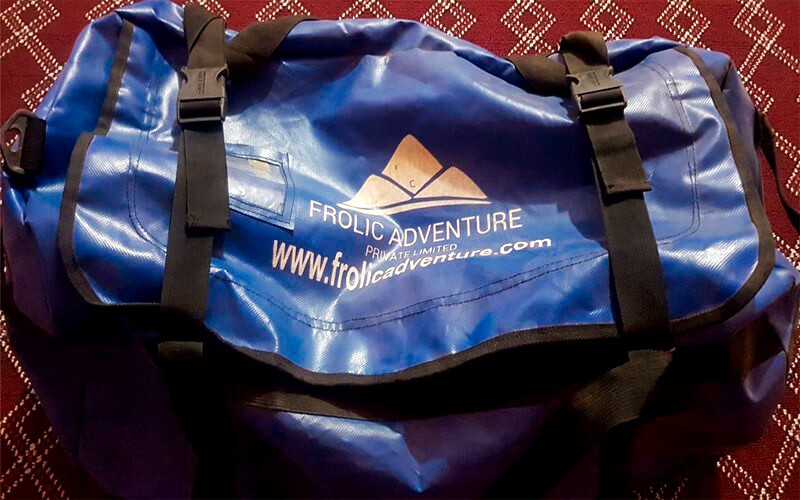
Main bag for trekking gear
It is always said to pack light while traveling. You should carry only a few clothes and accessories. Here are some basic things that you can bring along on this trek.
- Bandana
- Cap or hats
- Scarfs
- UV protected sunscreen
- Body lotion
- Hand sanitizer
- Headlight
- Torch
- Undergarments
- Shorts
- Trousers
- Hiking shoes
- Socks
- Gloves
- T-shirt (lightweight wool)
- Down jacket
- Fleece jacket
- Windcheater
- Raincoat
- Toothbrush
- Toothpaste
- Mirror (small)
- Towel
- Tissues
- Toilet roll
- Water bottle
- Bandages
- Bandaid
- aspirins
- Deodorants
- Camera
- Sleeping bag
- Shampoo
- Soap
- Nail cutter
- Camera
- Hand watch
Frolic Adventure is a leading trekking, tours, and adventure holiday operator company. Specialists in trekking, tours, and adventure activities in the Himalayas. Please feel free to contact us if you need any travel information.
